Gordon Haller Q&A: Winning the first Ironman, race evolution and more

Thirty-seven years have passed since Gordon Haller became the first athlete to cross the finish line of what would evolve to be, arguably, the planet’s toughest single-day sporting event. The Ironman triathlon was—and is—140.6 miles of insanity-inducing fitness hell.
But Haller set precedence and answered a dream that over 100,000 athletes attempt to replicate on a yearly basis. The Ironman’s 2.4-mile swim, 112-mile bike and 26.2-mile marathon leaves only the best athletes standing (barely), only after it has grasped them in its claws of suffering and crushed every energy source their bodies have to offer.
“I had two friends running with me, carrying water and coke,” says Haller of his finish on Feb. 18, 1978. “When we crested the last hill on Diamond Head, I could see the finish line two miles ahead. Barring a real fluke, I knew I had won it. When I crossed the finish, they asked me if I was in the race—I said, ‘I was,’ and they said, ‘Well, you’re done.’ Not exactly Mike Reilly’s famous, ‘You ARE an Ironman!’”
Mind over matter: Ultrarunner Dean Karnazes's brain-training device
Haller was one of 15 athletes who arrived in Waikiki to face a challenge originally proposed by Honolulu-based Navy couple John and Judy Collins, combining Hawaii’s three toughest endurance races—the 2.4-mile Waikiki Roughwater Swim, the 112-mile Around-Oahu Bike Race and the 26.2-mile Honolulu Marathon. And the rest is history.
“We designed the Ironman to be a challenge to the finish, not a race,” explains Haller, who is a present-day programmer analyst at Wal-mart’s corporate headquarters in Bentonville, Arkansas. “It proved to be a challenge for all. Only two didn’t finish, and one of them chose to be support for another participant.”
Haller recently spoke with SI.com about winning the first-ever Ironman world championship in Kona, the evolution of endurance racing, how to get through the "Final Hour" and much more.
On the first Ironman: “I had a really good team supporting me—a masseuse, cook, two drivers, surfboard guide and a couple of pacers. I had good nutrition, fluid intake, and confidence in the team and myself. I knew I was the fastest and most experienced cyclist, and the only one to have done the actual bike race. I also knew I was the fastest marathoner. I was worried about my swim, but trusted my guide. The swim went great and I finished in the middle, place-wise. I had the fastest ride and was in second by the end of the ride. … After catching [John Dunbar] at 15 miles and several other times, I realized I was running faster than he was. At 21 miles, I beat him by 35 minutes over the last five miles.”
Take us through the race (strongest/weakest segments and issues faced): “In the run, I had to stop a few times for muscle cramps and [have] them massaged. I also had to make a few bathroom stops. At least I was getting fluids. When I stopped for a bathroom break on the bike, I was shocked to feel how difficult it was to walk after riding that hard. It had me a little worried for the run.
“The only equipment problem was the gearing on the bike—not low enough for the climb over the top of the island. I switched to my other bike and made the climb easily. [My] strongest segment was the last 5.2 miles of the run.”
Making a case for more women in the Ironman World Championship
Layout of the course: “The race was held on Oahu. The events and distances were taken from the main event of each sport. The swim was the Waikiki Roughwater Swim course, held every Labor Day. The run was the Honolulu marathon course, held the first weekend of December. The bike ride was a two-day stage race starting in Haleiwa on the north shore—it was 115 miles. We shortened it to 112 and started at the end of the swim and ended at the start of the marathon course.”
On crossing the finish for the first time: “I was feeling really strong over the last 5.2 miles after I passed John—I ran the last 5.2 in about 30 minutes. The last 3/4-mile was straight and flat. [It’s] always exhilarating finishing the marathon.”
On training for the first Ironman and how he’s evolved: “After the Marine Corps Marathon in November of ‘77, I won a race in the Mojave Desert. Then, I returned to Hawaii and tried to run the Honolulu Marathon. I dropped out at 6 miles due to sciatica. A friend watching the race told me—at that point—that there was a race invented for me. I started training with a little swimming, a lot of Nautilus weight training and a lot of biking. In February, I cut the swimming and bike down and ramped-up the running. I ran 187 miles in the first two weeks of February, rode only 20 or 30 miles and only swam six times, for a total of 8,000 meters.
“These days, my training is mostly cycling, followed by consistent swimming two or three days a week. The running is harder as my joints are feeling the years, so I walk a lot to make up for reducing the running. I still strength train one to three times a week.”
What makes the Ironman championship arguably the most difficult single-day sporting event in the world: “It’s combination of things—heat, humidity, wind and hills. Many participants make it harder by training too hard during the week leading up to the race. The same factors that make the race tough sap their strength before they ever start the race.”
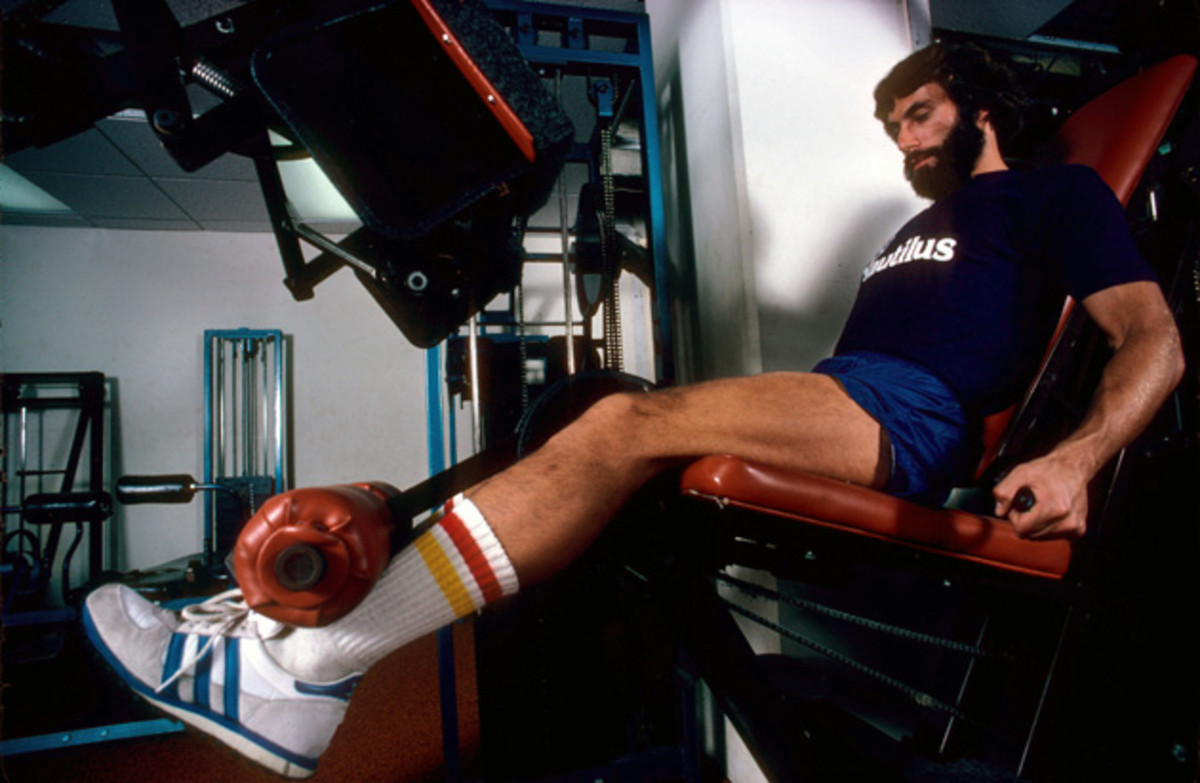
The mental emotion that takes place while racing the Ironman World Championship: “Beginning with difficulty in sleeping the night before, one has to get up very early and do all the pre-race preparation. It’s really exciting checking in at the pier, getting the numbers on, preparing the bike, and talking to friends and strangers. The media is everywhere, asking questions—a minor distraction, [but] a distraction is kind of welcome. It keeps the mind off how nervous you are.
“When the cannon goes off, it’s a frenzy of action. I try to stay on the outside of it and get into my rhythm. I concentrate on form and breathing. When I get that under control, I think about pace and enjoy the view until the end of the swim. … Then, the frenzy begins again in T1. My emotional state varies depending on how the swim went. Usually optimistic, my mood can change in a hurry depending on how the ride is going. I start calculating numbers and splits in my head—pacing is important. The run is where I start philosophizing. Between 13 and 19 miles, one begins to question why we are there. This is where we find out what we are made of. If I can get to 19, I can smell the barn and pick up the pace.
“In the last hour, the lights in town are visible and the noise becomes audible. Turning the corner on Palani Road, it’s all downhill; pace quickens as the crowd cheers. Turning onto Ali’i Drive, the noise is so loud you can’t hear, you just feel like you’re floating and there’s no longer a feeling of effort. You realize that you will once again be an Ironman. [It’s] like no other feeling I’ve ever had.”
Triathlete Andy Potts makes sure all the training he does works for him
On the “Final Hour” (16th hour): “I still like to stay and watch the rest of the finishers until midnight. The crowd is so knowledgeable and really wants the finishers to finish in time. And, they will stay after midnight to cheer for those who didn’t quite do it fast enough, although [they’re] still covering the distance. These are the people we made the race for; the challenge of being able to do it. This may be the only time they get the chance.”
How the race has evolved since the first Ironman: “We designed the Ironman to be a challenge to finish; many people still want to do it as a challenge. [But] most of the people who actually get to do Kona are able to race it—seems to be little room for non-competitive participants.
“Entry fees are exponentially up. The race has become a series of races worldwide, still leaving very little chance for most people to do it.”
Hopes for the Ironman following the first race and prediction for the future: “In 1978, there was no IWC, HTC, WTC, USAT or any other owner, or governing body. We had no idea it would ever get this big. If we did, we would be rich today. Valerie Silk had an inkling it would grow, but I don’t think even she could envision what it is today. She was, however, responsible for the initial exponential growth. She was very nurturing and wanted the Ironman to be a safe and great experience for endurance athletes. When she sold it to WTC, the Ironman took a different direction—very commercial, but again, exponential growth. … It will be interesting to see what the recent sale of the Ironman brand to Dalian Wanda of China will do to the sport.
“There are so many Ironman branded races; they may have glutted the market. There are other racing series that are more reasonably priced and growing in popularity. They could be a competition for our triathlon dollars.”
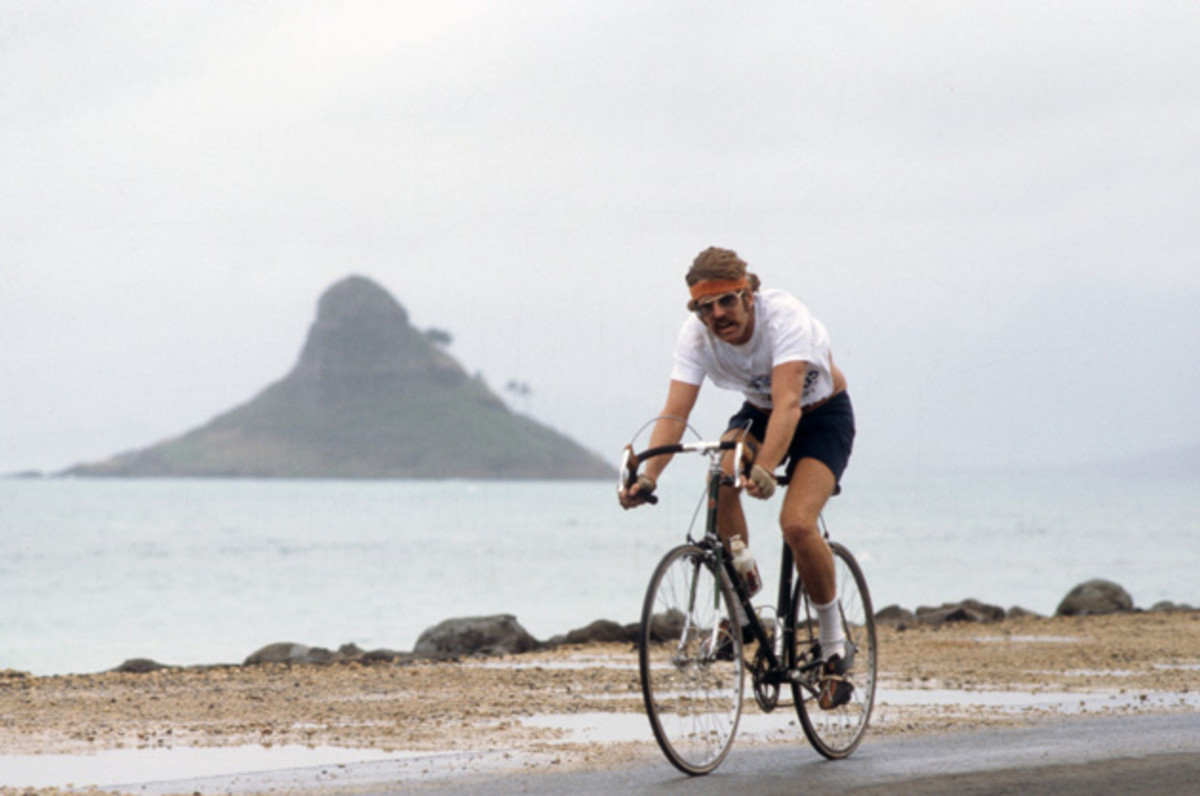
Personal racing history: “My first tour of duty in the Navy landed me in Hawaii. The weather was so nice and the running boom was just taking off in 1972, so I went a little crazy with my running, cycling and swimming. I was named runner of the year three times in the ‘70s in Hawaii. I won the Maui Marathon twice with course records. In ‘75, I finished third in the National AAU 50 km road championship. In ‘77, I finished fourth in the military division and 16th overall in the Marine Corps Marathon. In ‘81, my teammates and I won the CIOR Military Pentathlon world championship.”
Present-day life: “Currently, my wife, Beth, and I participate in endurance sports, mostly triathlons. There is a small, but growing, enthusiastic endurance-centric community here in Northwest Arkansas. On non-race weekends, we just like to go for long rides, maybe do a little swim workout. We socialize with our endurance sport friends. I swim, bike, run and lift regularly, but don’t get upset if I have to miss a workout. At 65, I don’t want to overdo it. … We are about to become grandparents for the first time.”
Outlook/advice for the 2015 Ironman World Championship competitors: “Pay attention to pacing, fluids and nutrition. It gets deceptively hot due to the humidity. Whether it’s your first Ironman or not, enjoy the trip and stay in the moment. If you’re struggling late in the evening, it will be a good time to do some soul-searching and find out what you’re made of.
On Sunday, write down everything you can remember of the race and how you felt and coped with the discomforts. If you find you’re going so slow on the run that you could walk faster, then walk for a while. It’s not how fast you go; it’s how slow you don’t go.”
GALLERY: Highlights from the 2014 Ironman championship
The 2014 Ironman World Championship in Kona
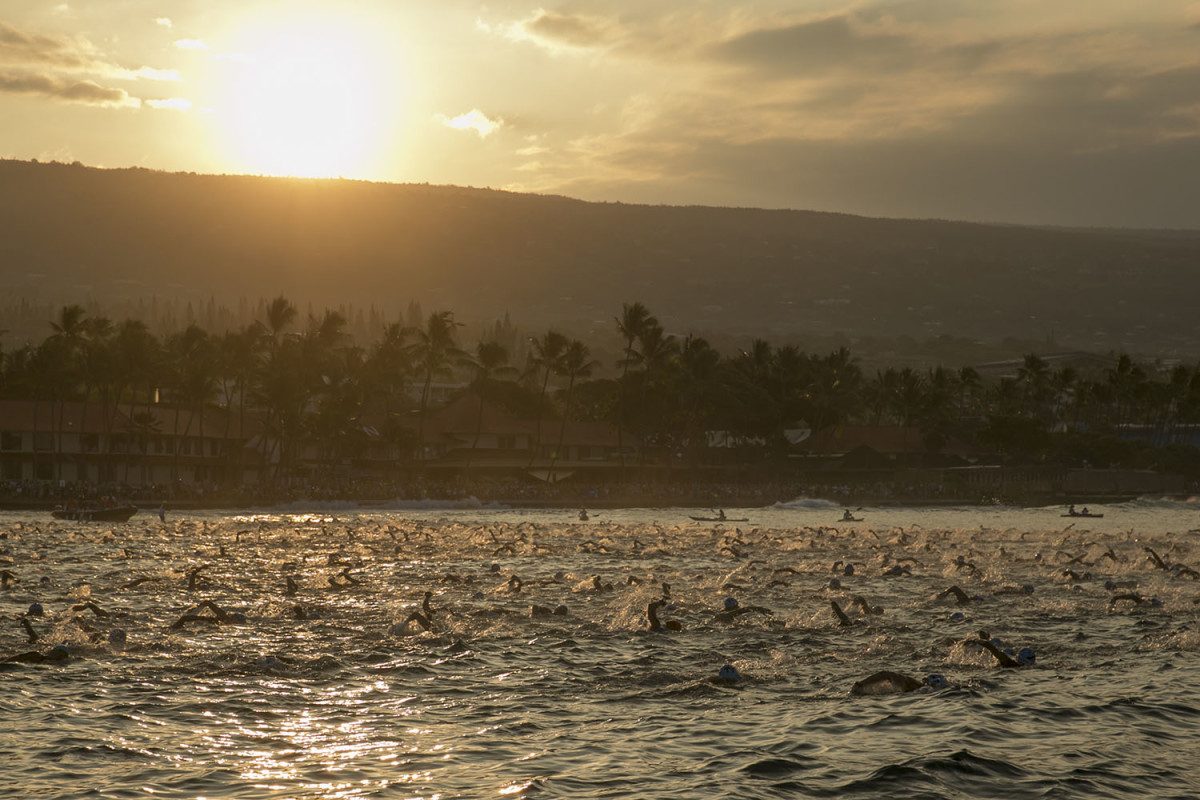
The sun rises over Mauna at the start of the IRONMAN World Championship.
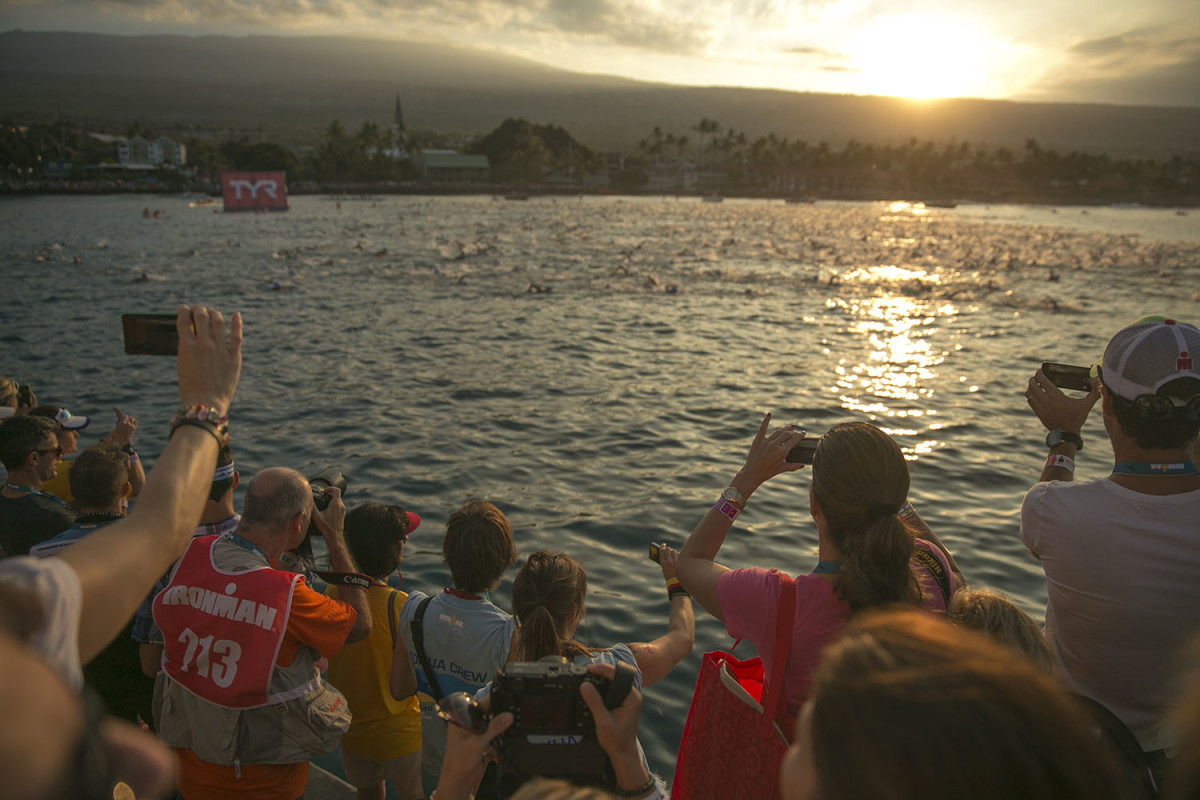
Onlookers watch the swimmers at the start of the race.
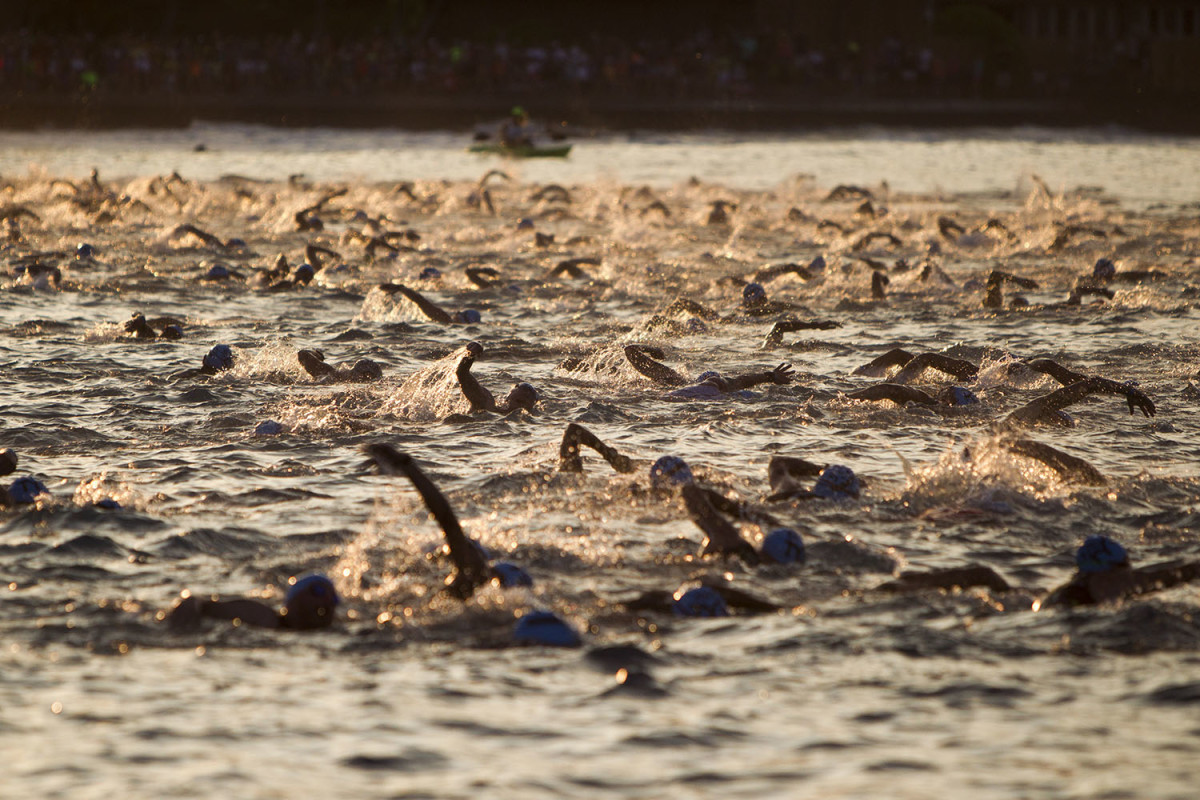
Swimmers are seen at dawn in the 2014 IRONMAN World Championship on Saturday, Oct. 11, 2014 in Kailua Kona, Hawaii.
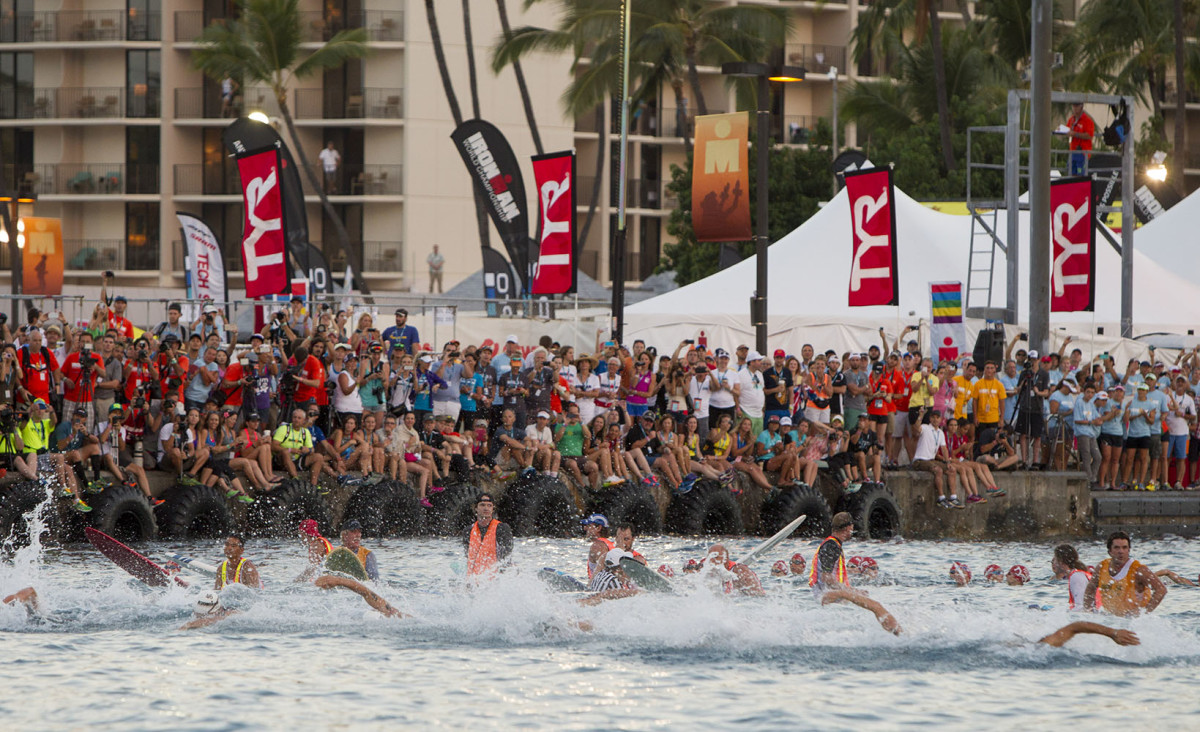
Swimmers are seen at the start of the 2014 IRONMAN World Championship.
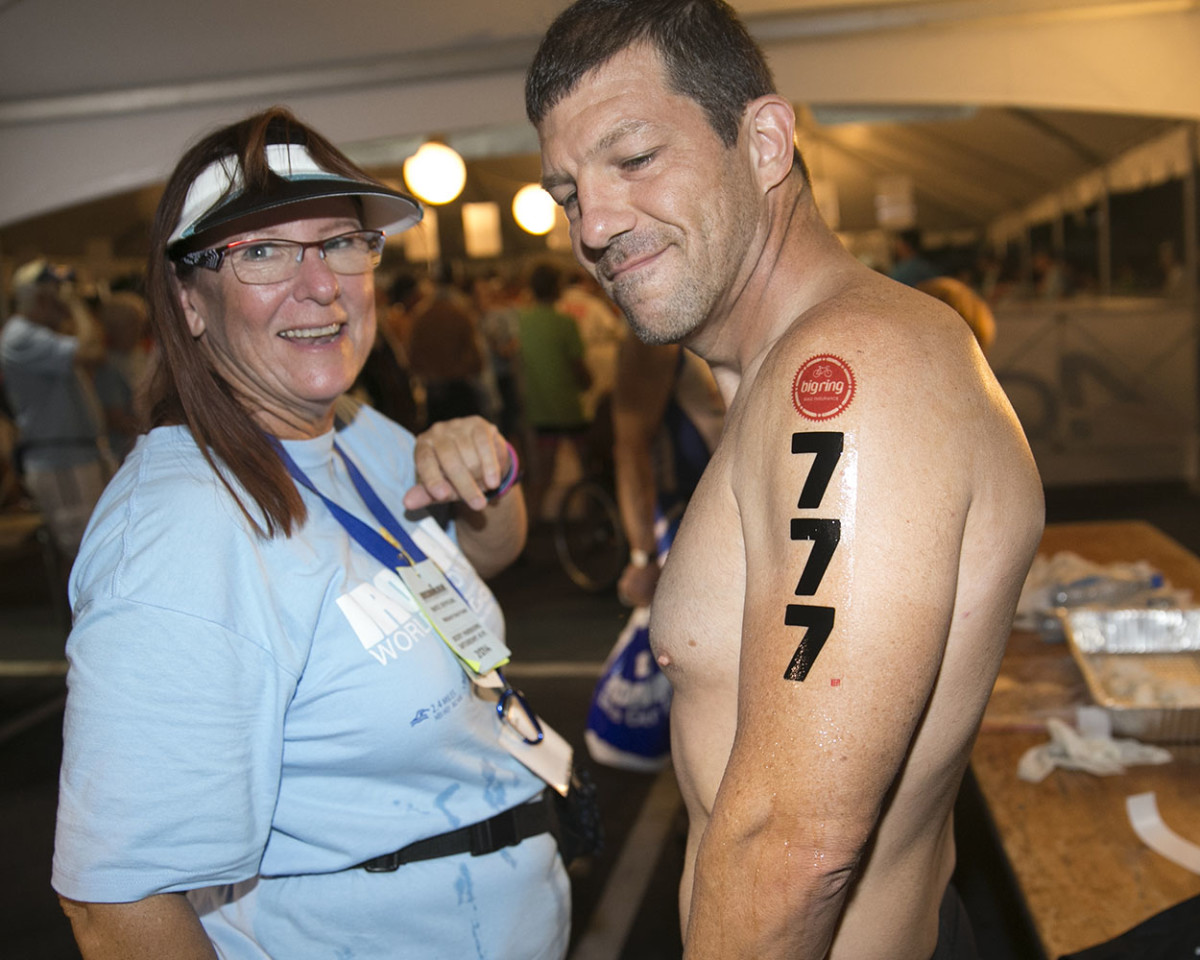
A race official places a body number on athlete Mike Avadikian before the start of the 2014 IRONMAN World Championship.
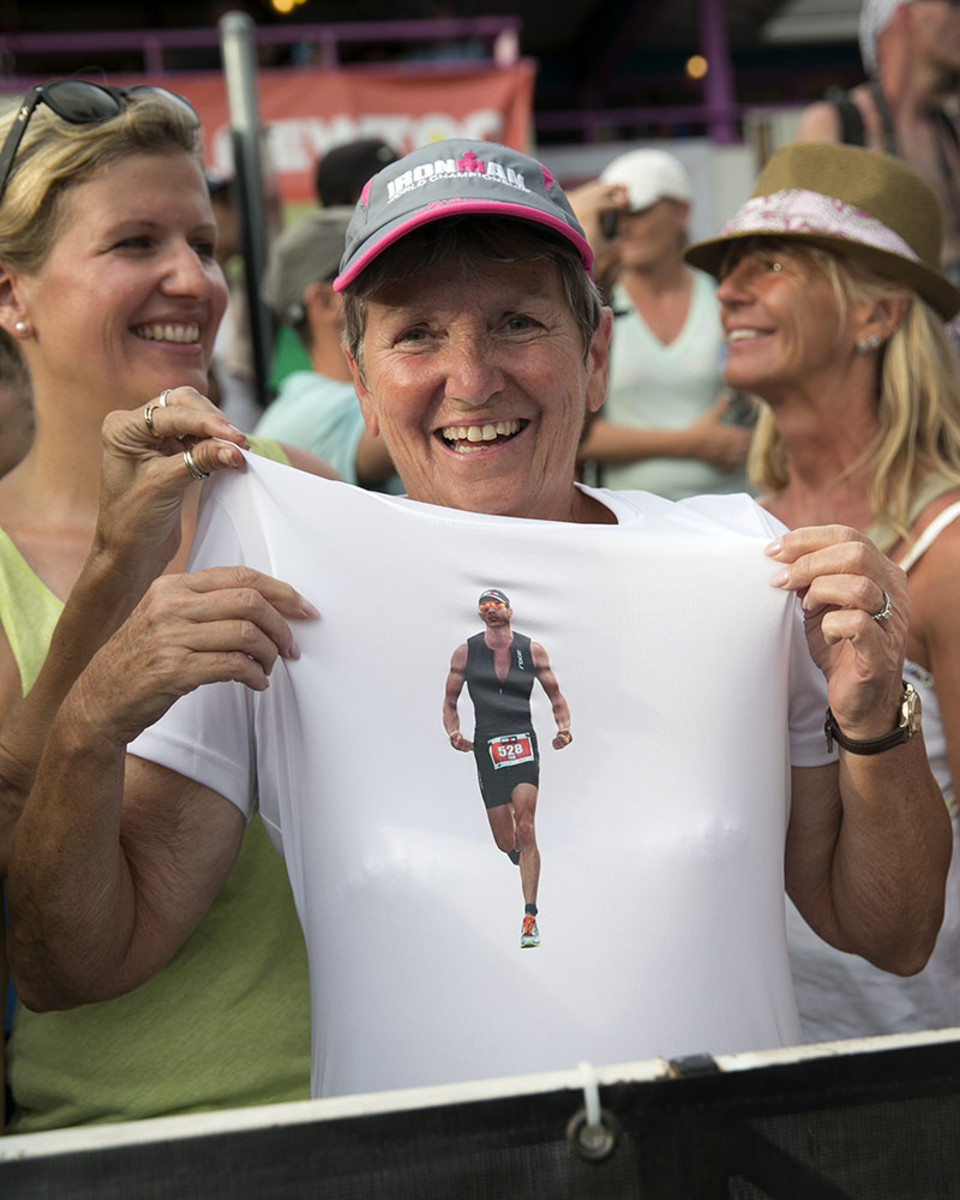
A fan wears a shirt of athlete David Arnold.
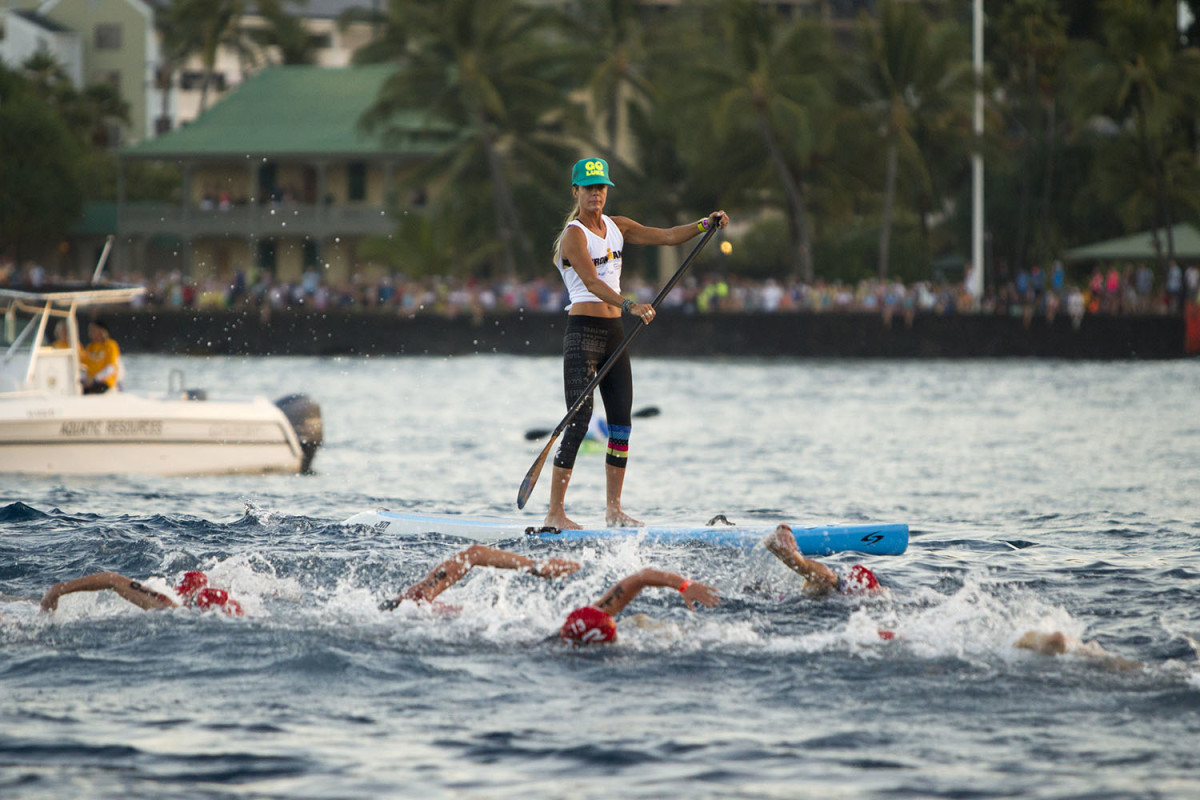
A paddle boarder watches over swimmers during the start of the 2014 IRONMAN World Championship.
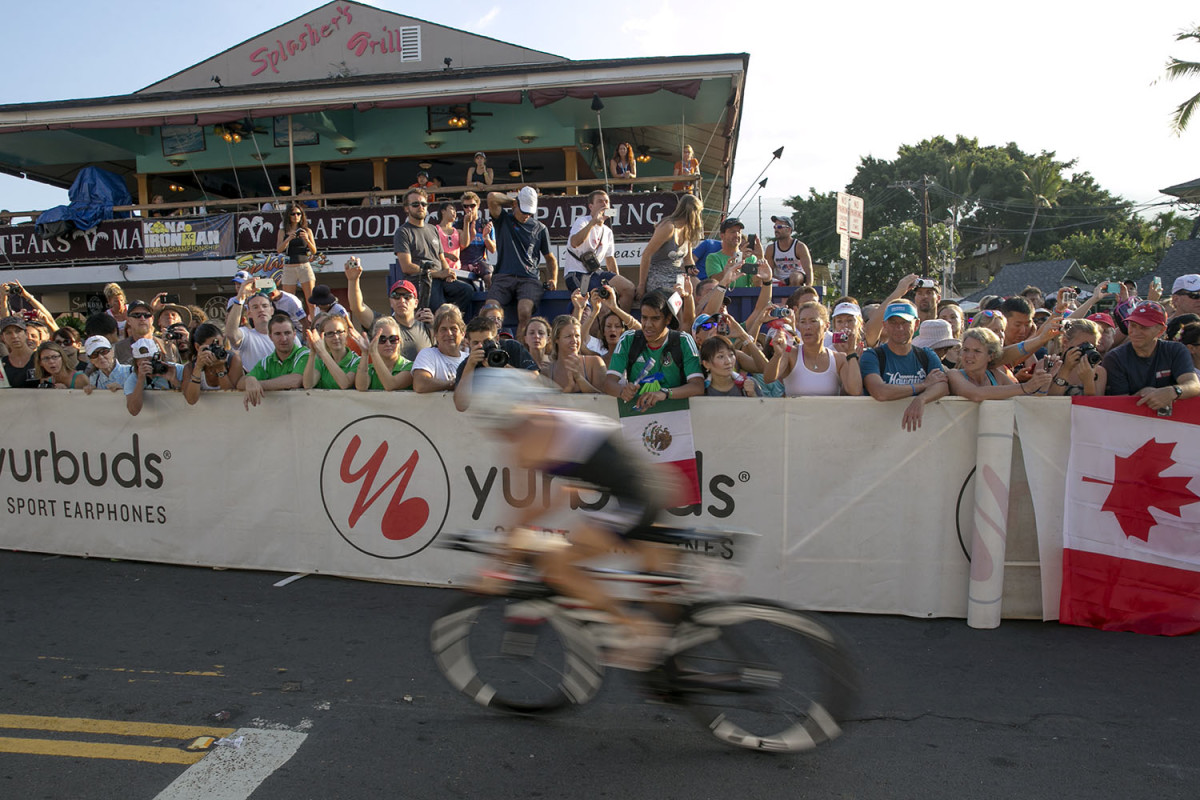
Onlookers watch bicyclist at the start of the 112-mile bike race of the 2014 IRONMAN World Championship.
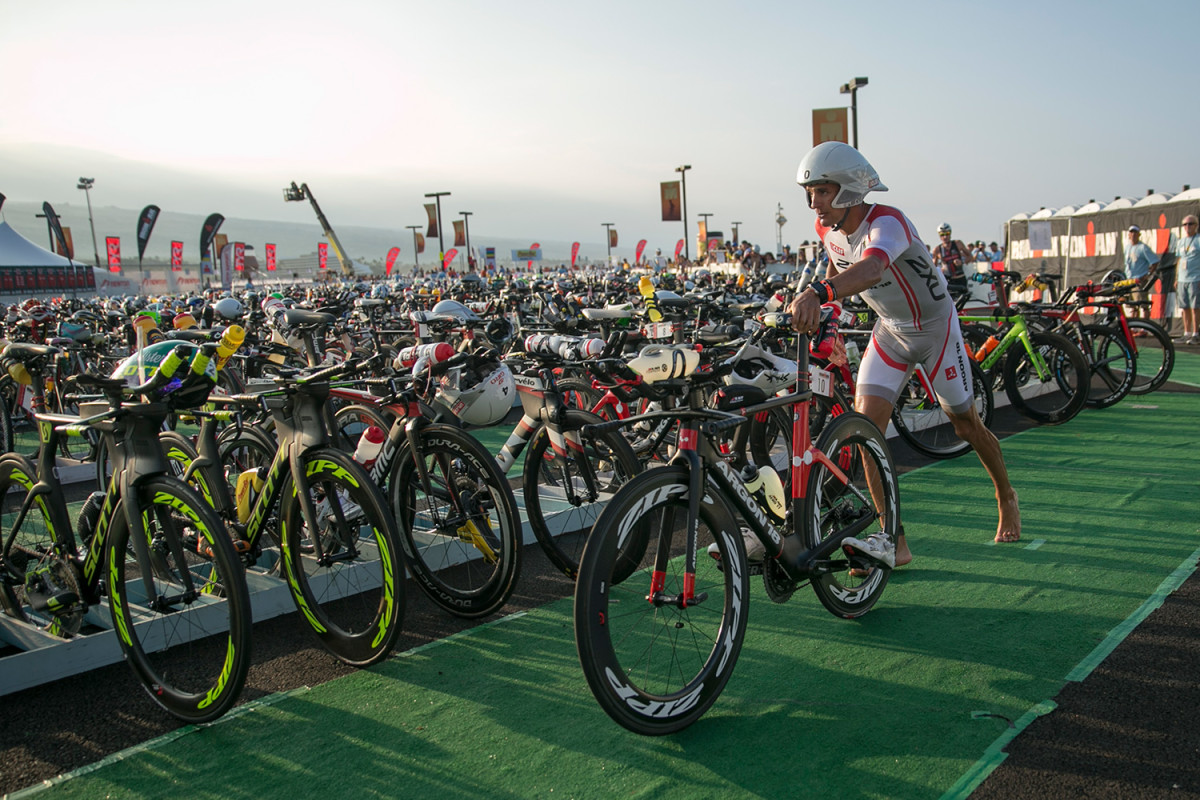
Terenzo Bozzone takes his bike out of the transition area before the start of the 112-mile bike race.
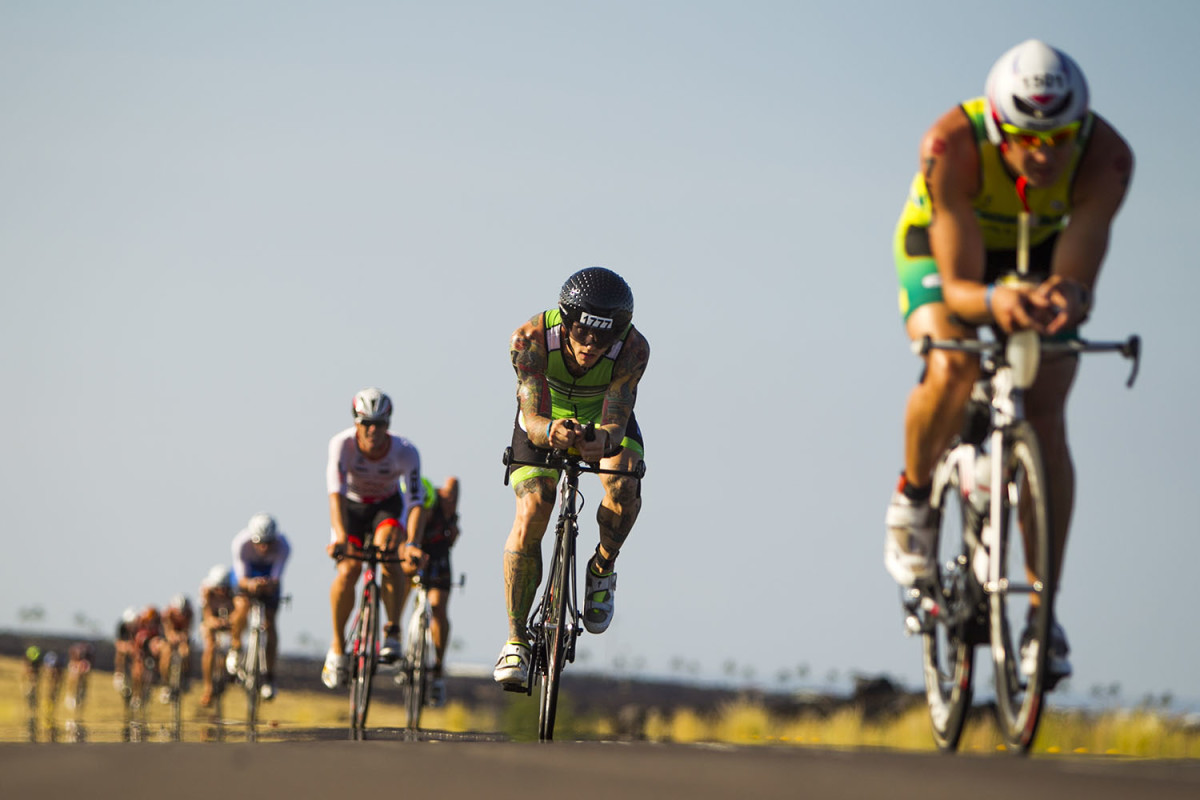
Age group racers hit the road during the 112-mile bike race.
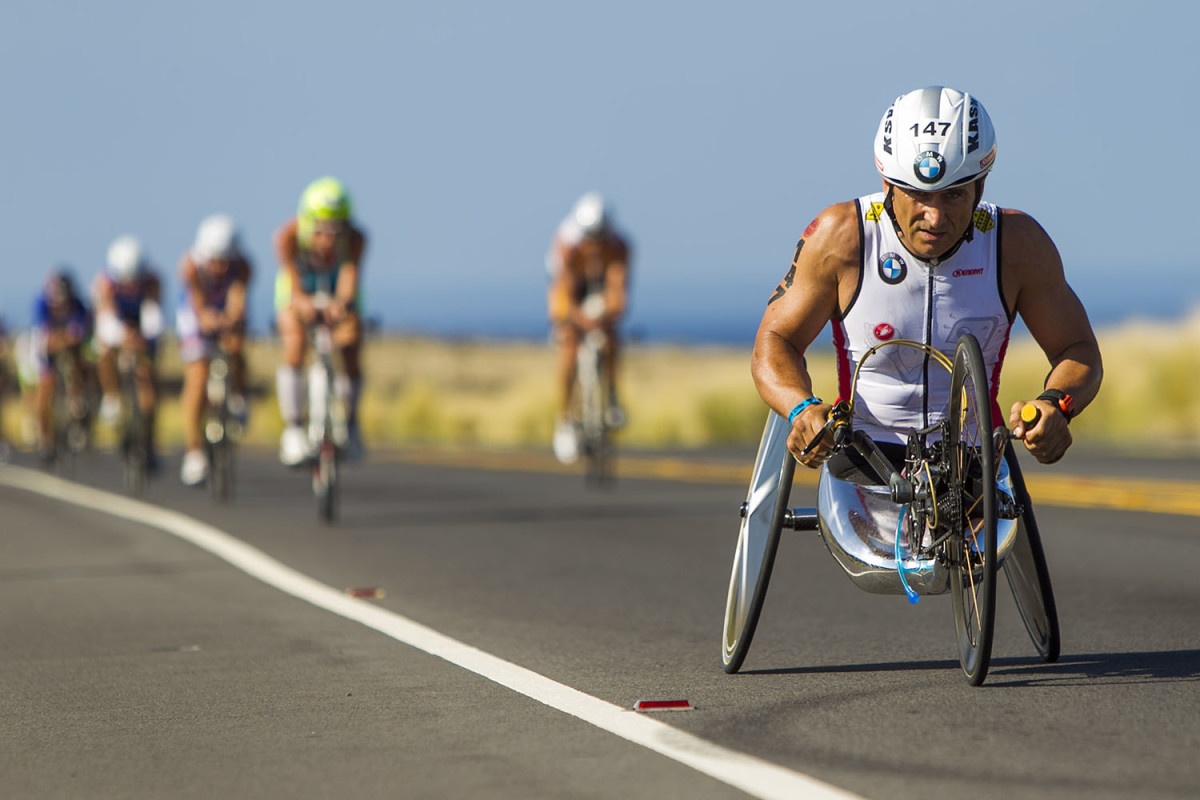
Paralympic handcycle champion Alex Zanardi leads a pack of racers during the 112-mile bike portion at the 2014 IRONMAN World Championship.
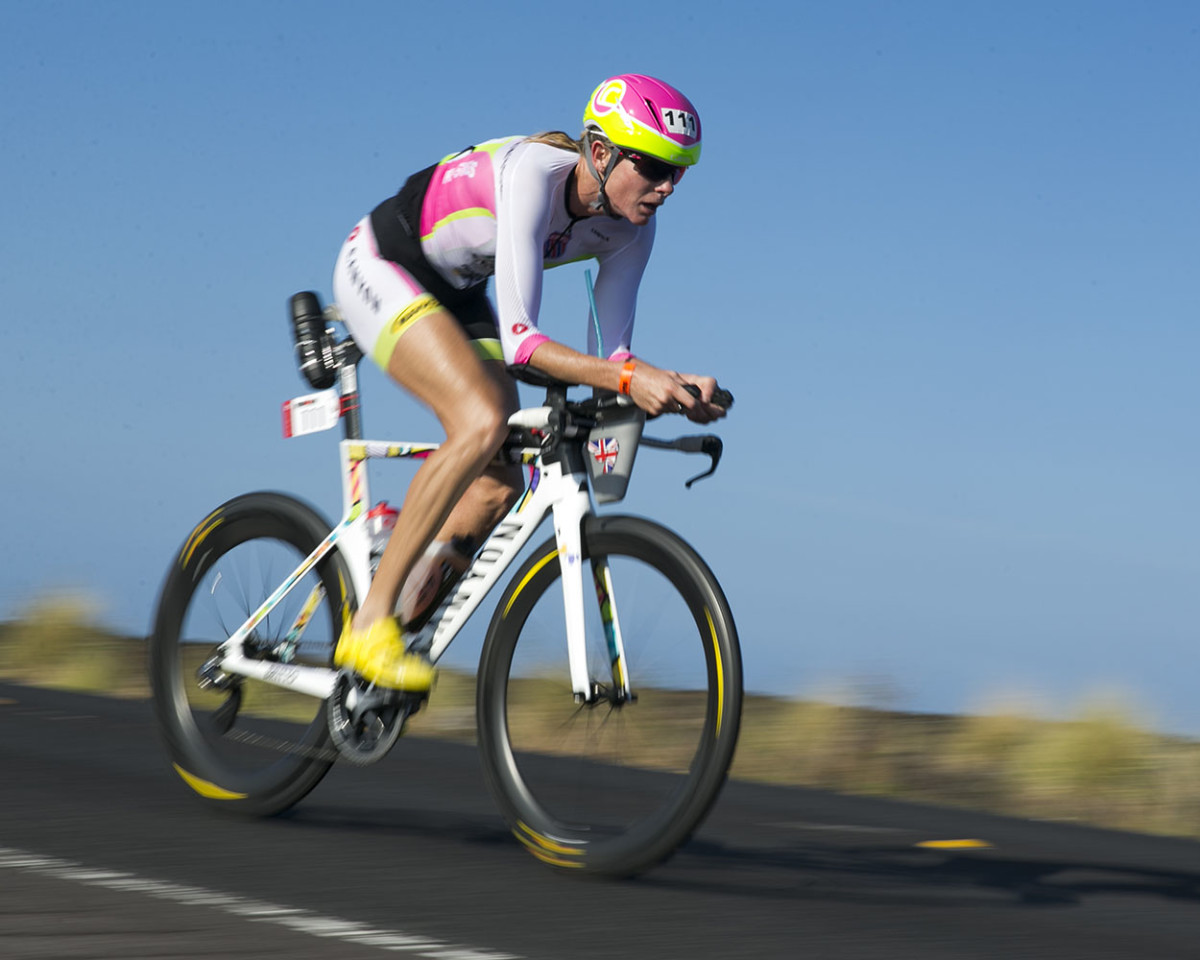
Leanda Cave zooms down the road during the 112-mile bike race.
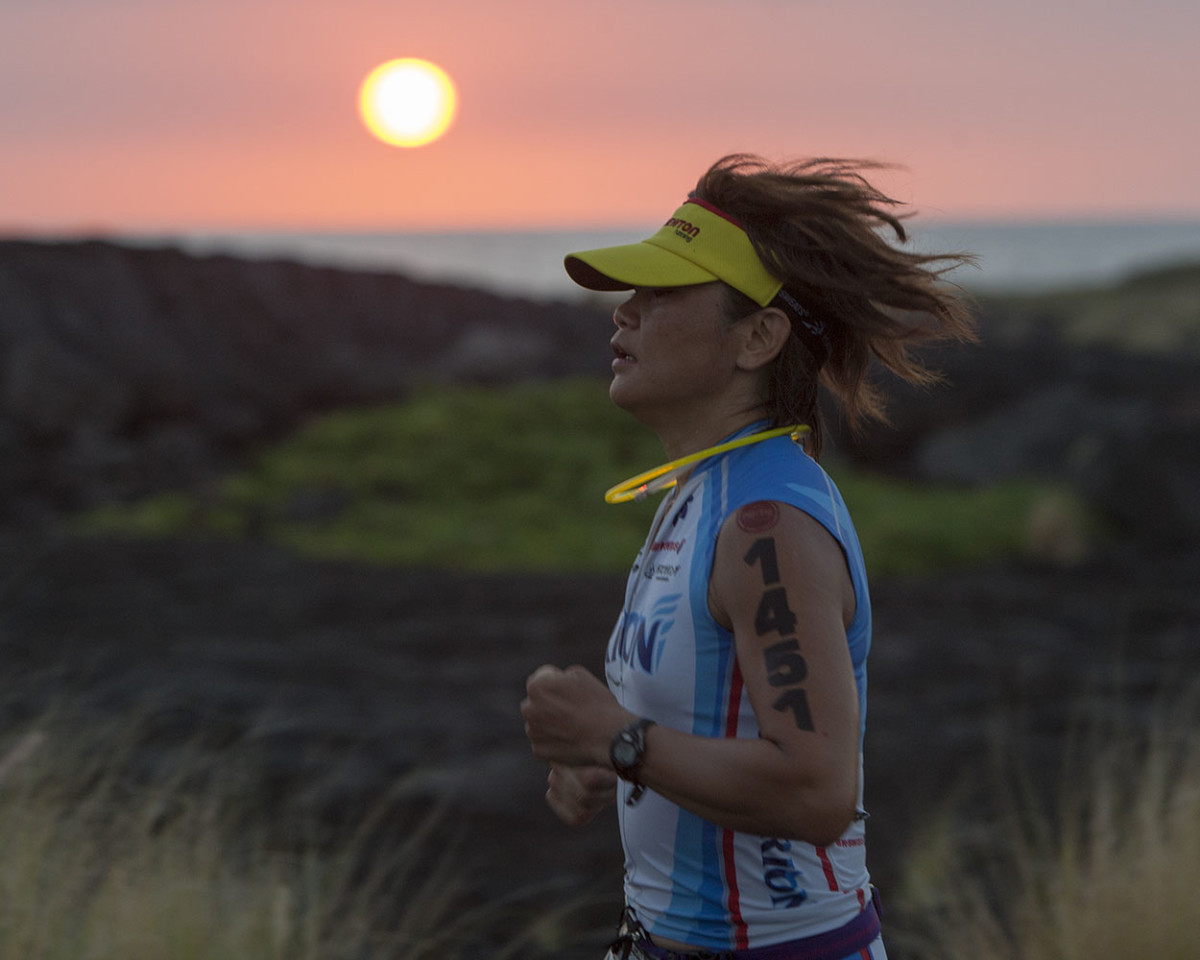
As the sun sets, Kaoru Suzuki runs the marathon during the 2014 IRONMAN World Championship.
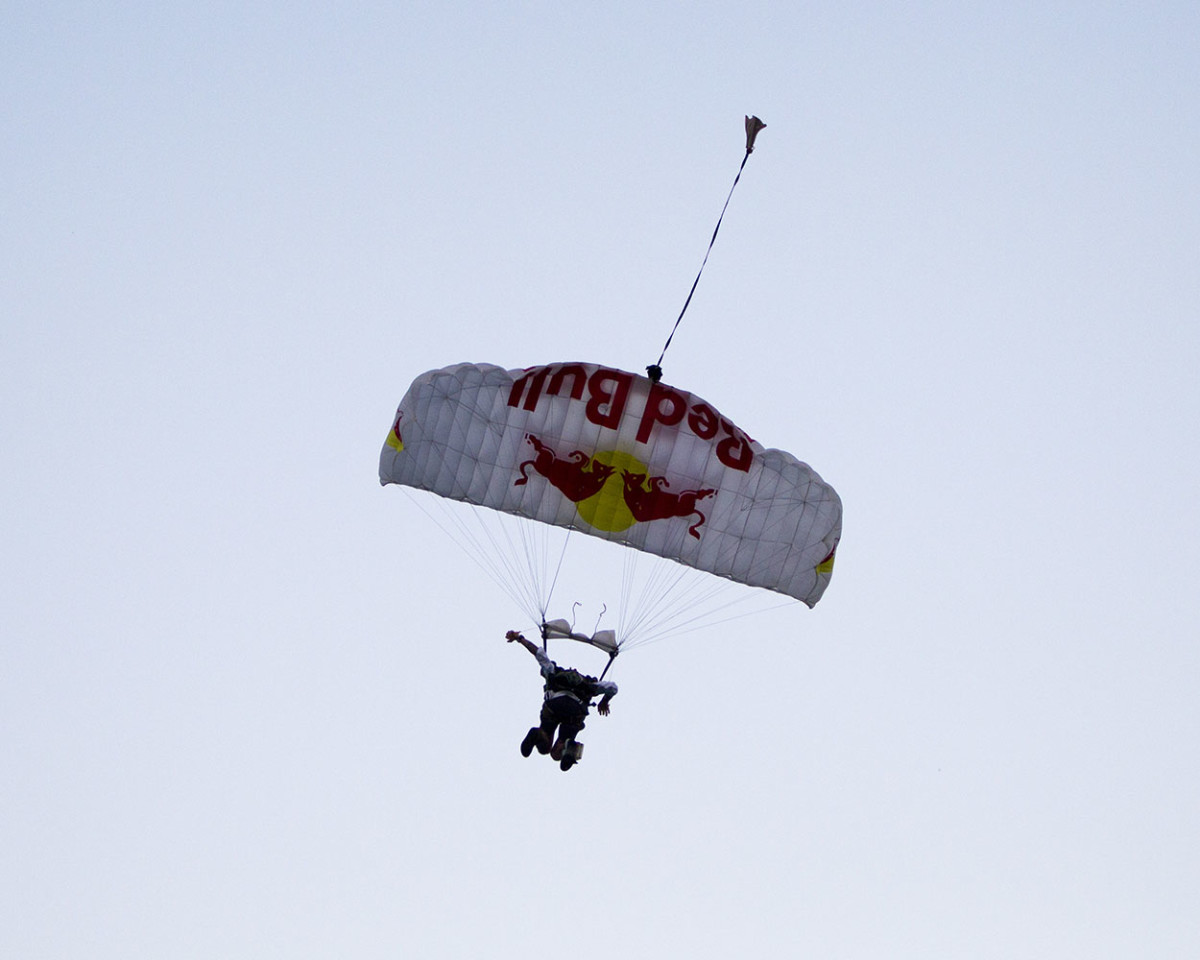
A Red Bull parachute team member jumps into the ocean before the start of the 2014 IRONMAN World Championship.
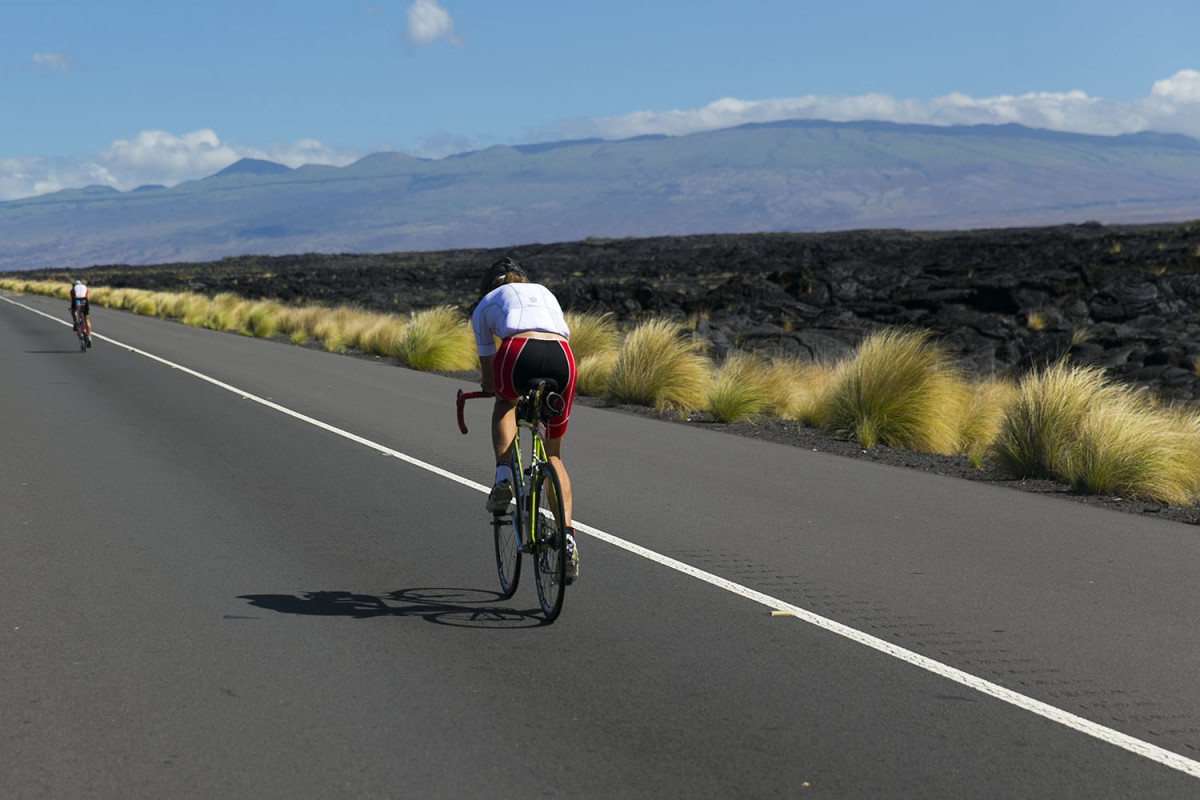
Athletes zoom down the road during the 112-mile bike race.
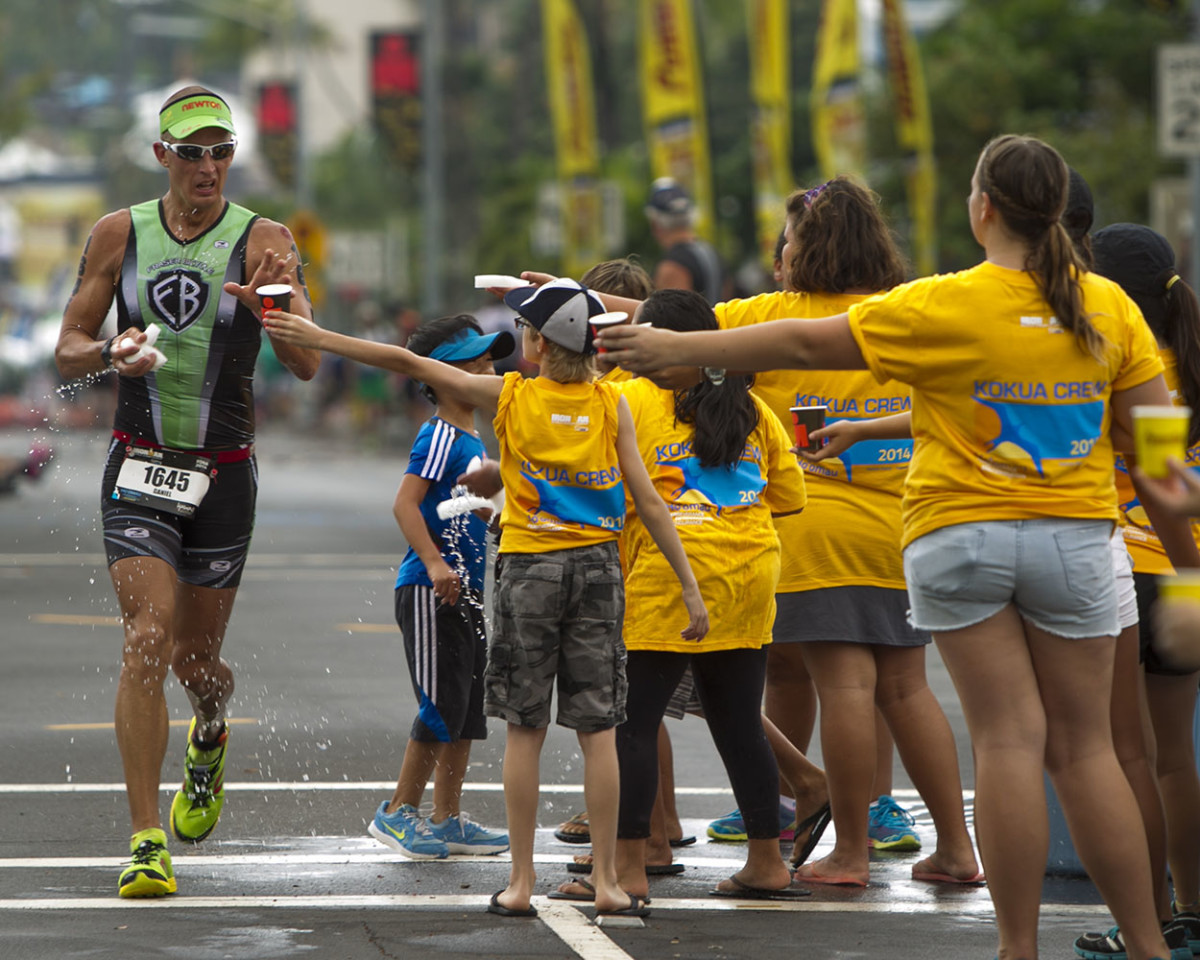
Daniel Stubleski grabs water from an aid station during the marathon portion of the 2014 IRONMAN World Championship.
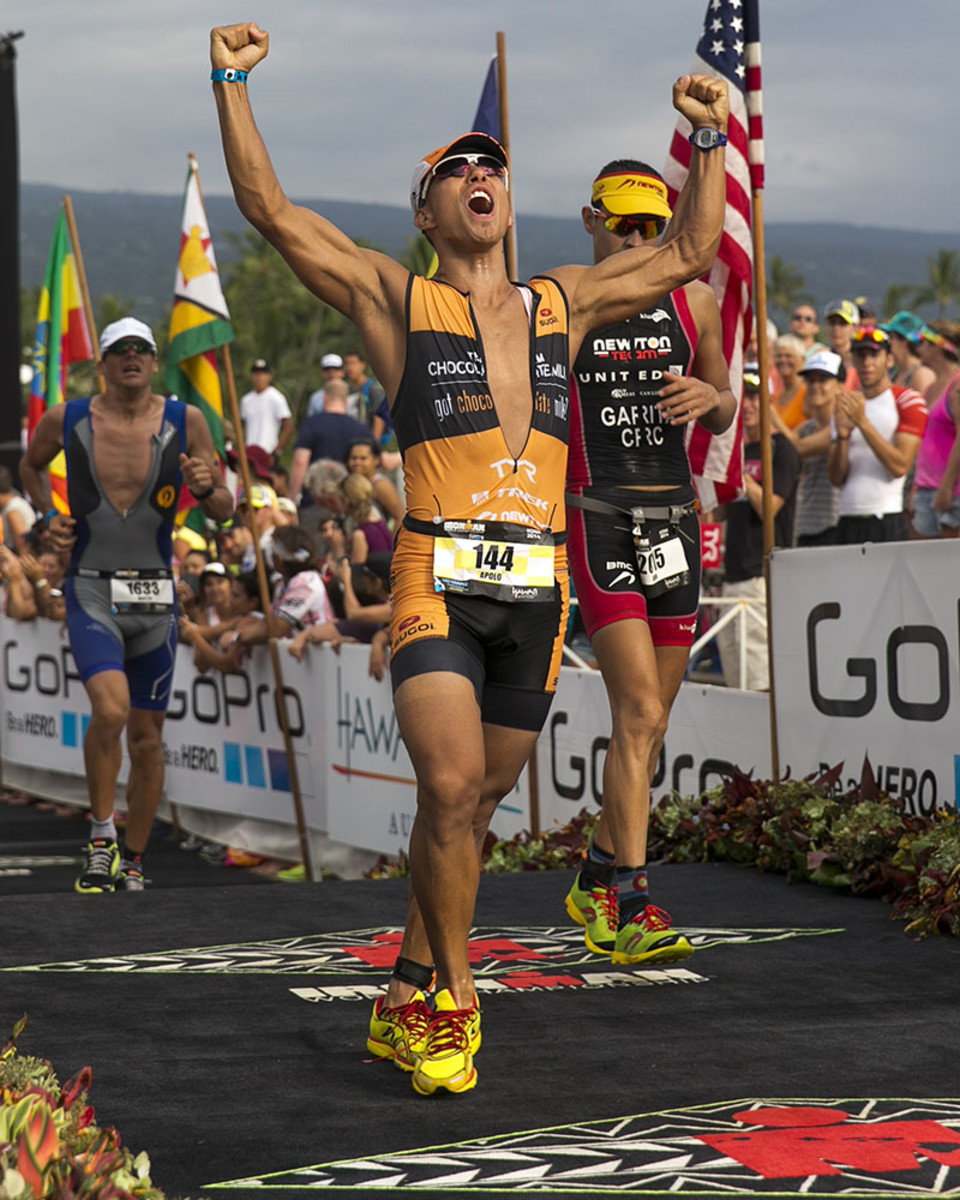
Former Olympian Apollo Ohno crosses the finish line at the 2014 IRONMAN World Championship.
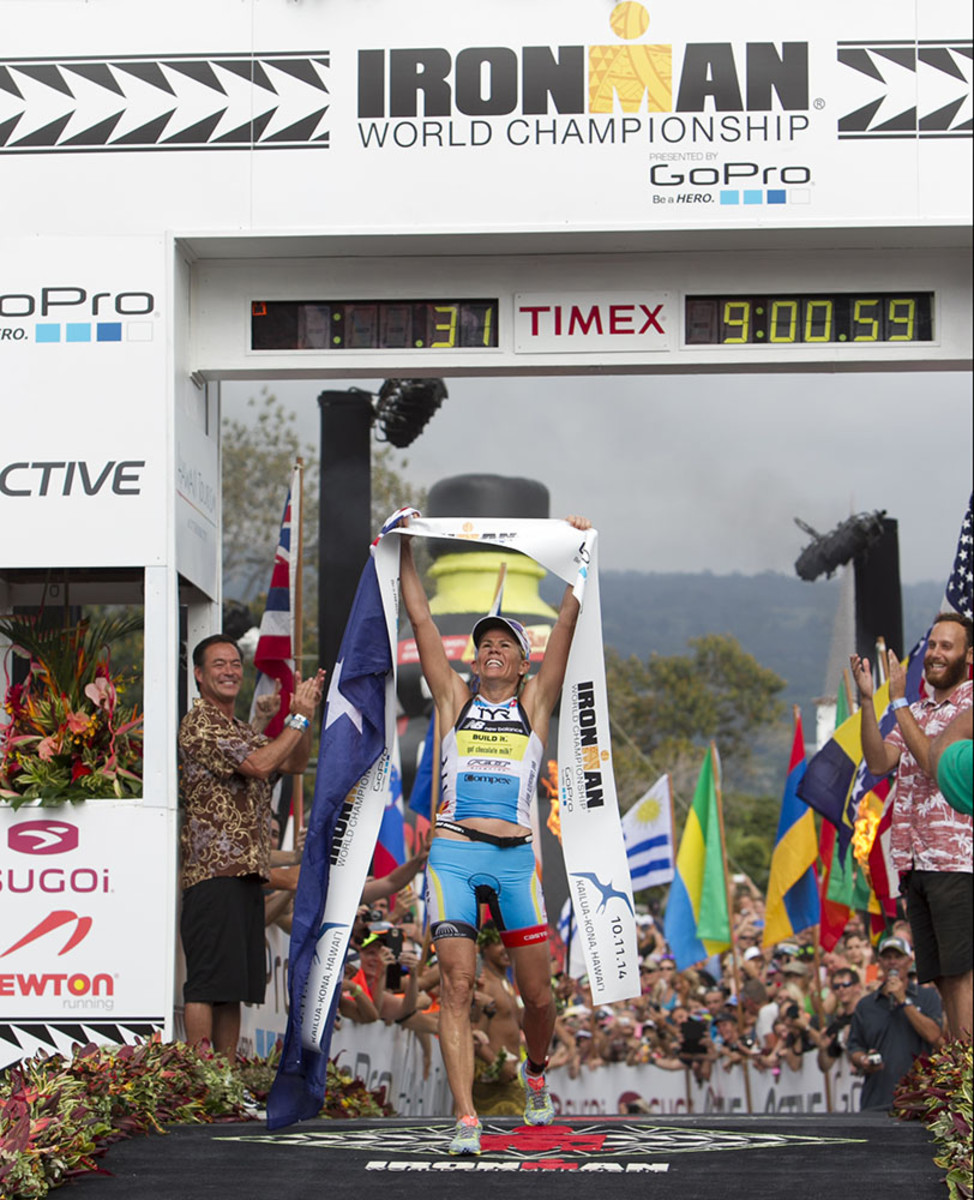
Mirinda Carfrae wins the woman's 2014 IRONMAN World Championship title.
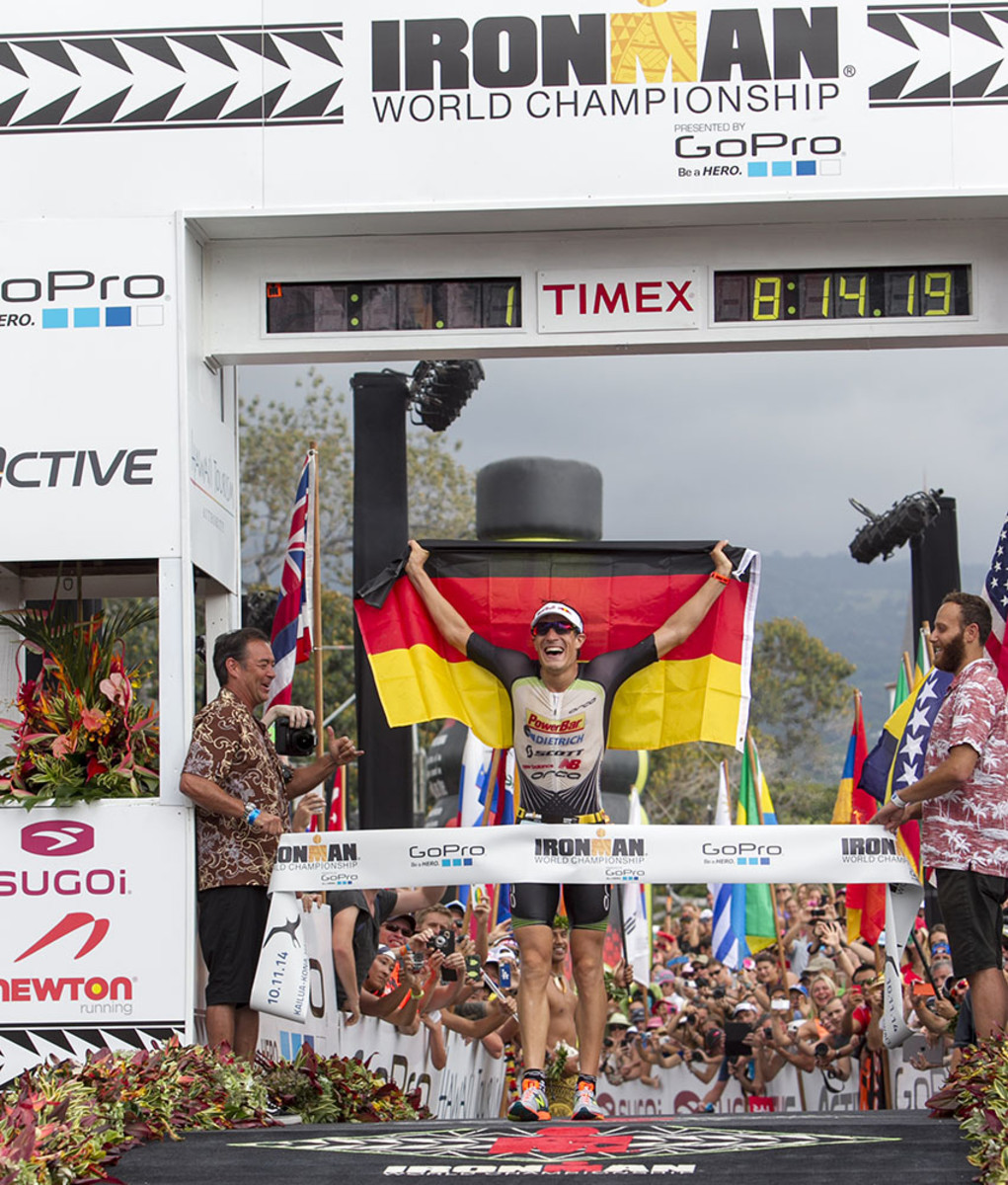
Sebastian Kienle wins the men's 2014 IRONMAN World Championship title.
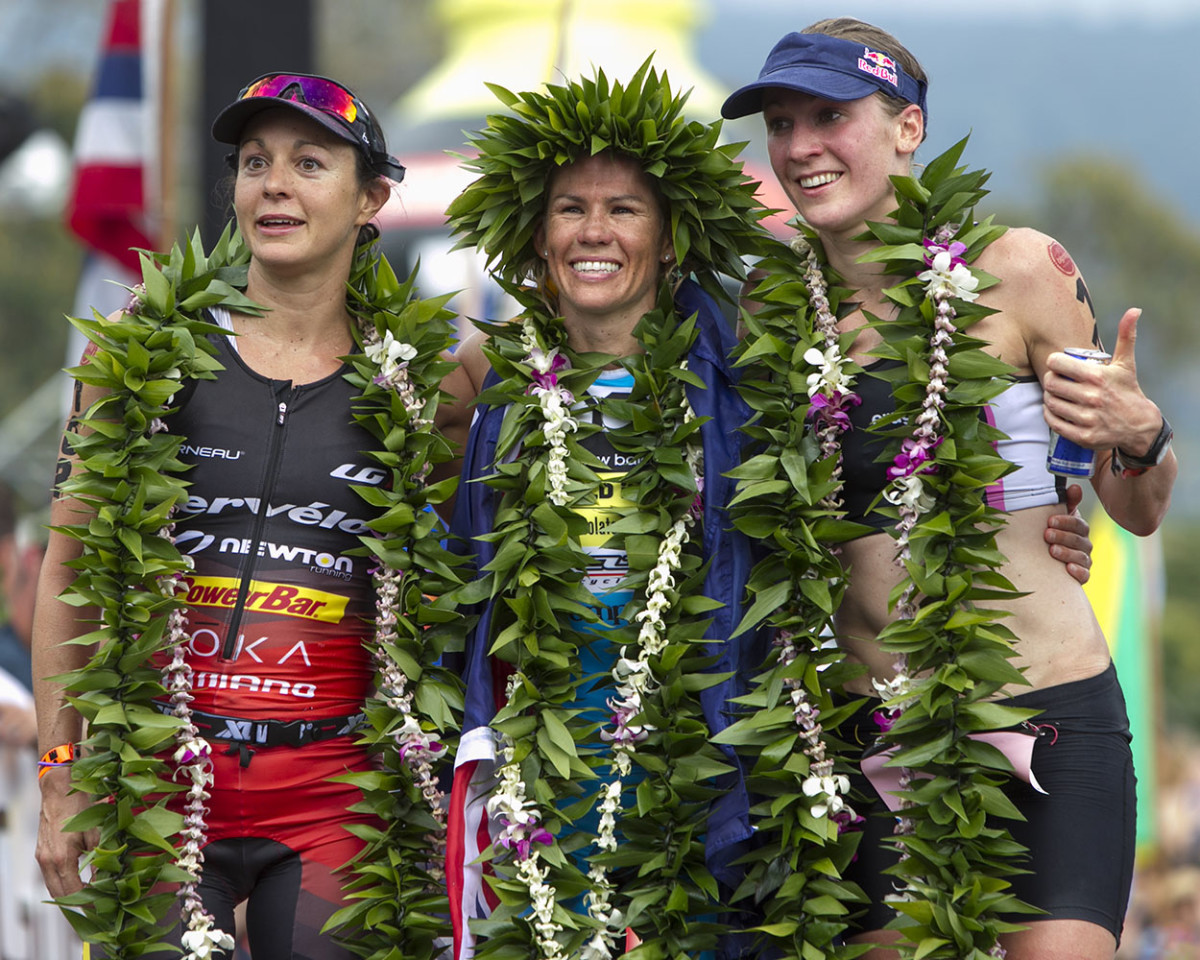
(Left to right) Rachel Joyce, Mirinda Carfrae and Daniela Ryf are seen at the finish line during the 2014 IRONMAN World Championship.
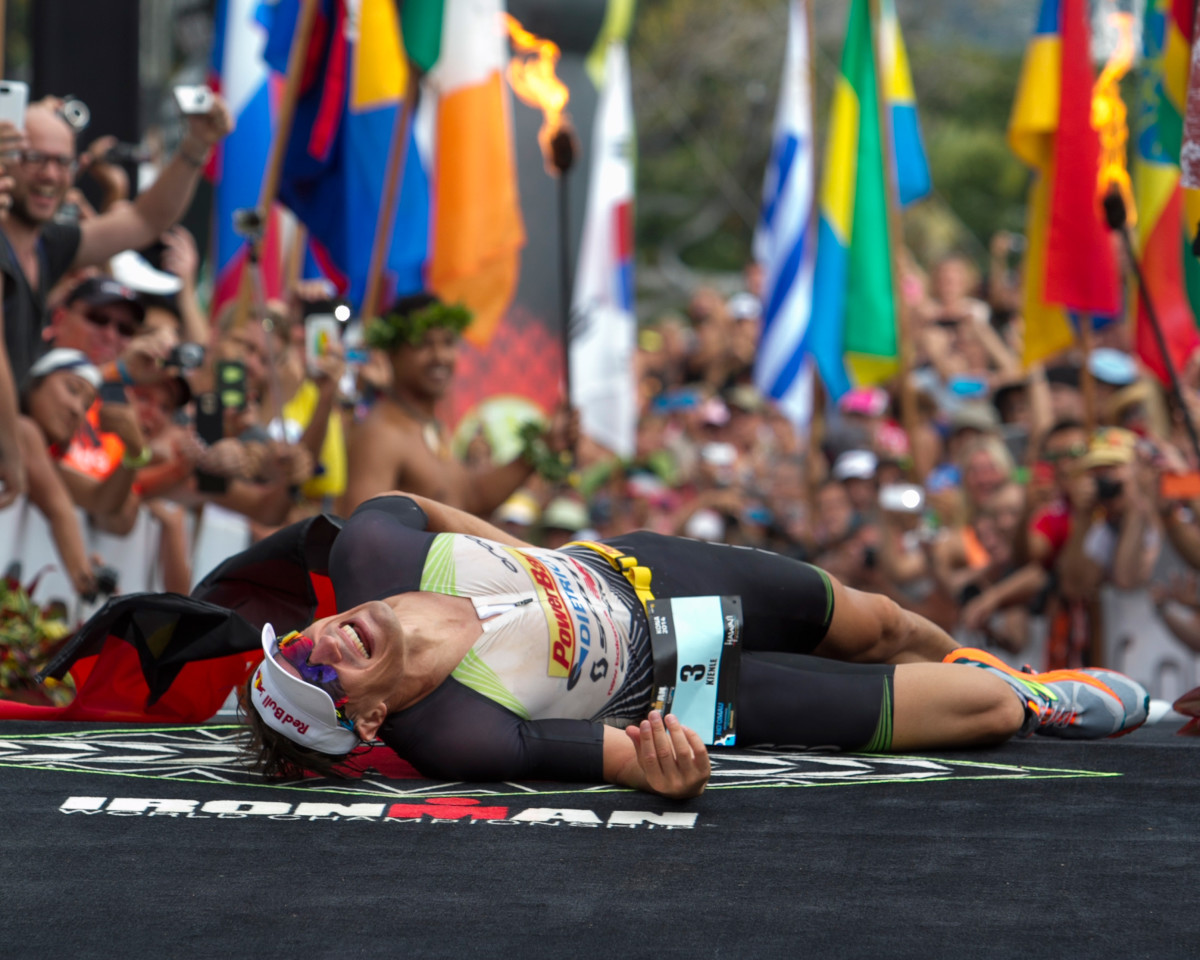
Sebastian Kienle reacts after winning the men's 2014 IRONMAN World Championship.
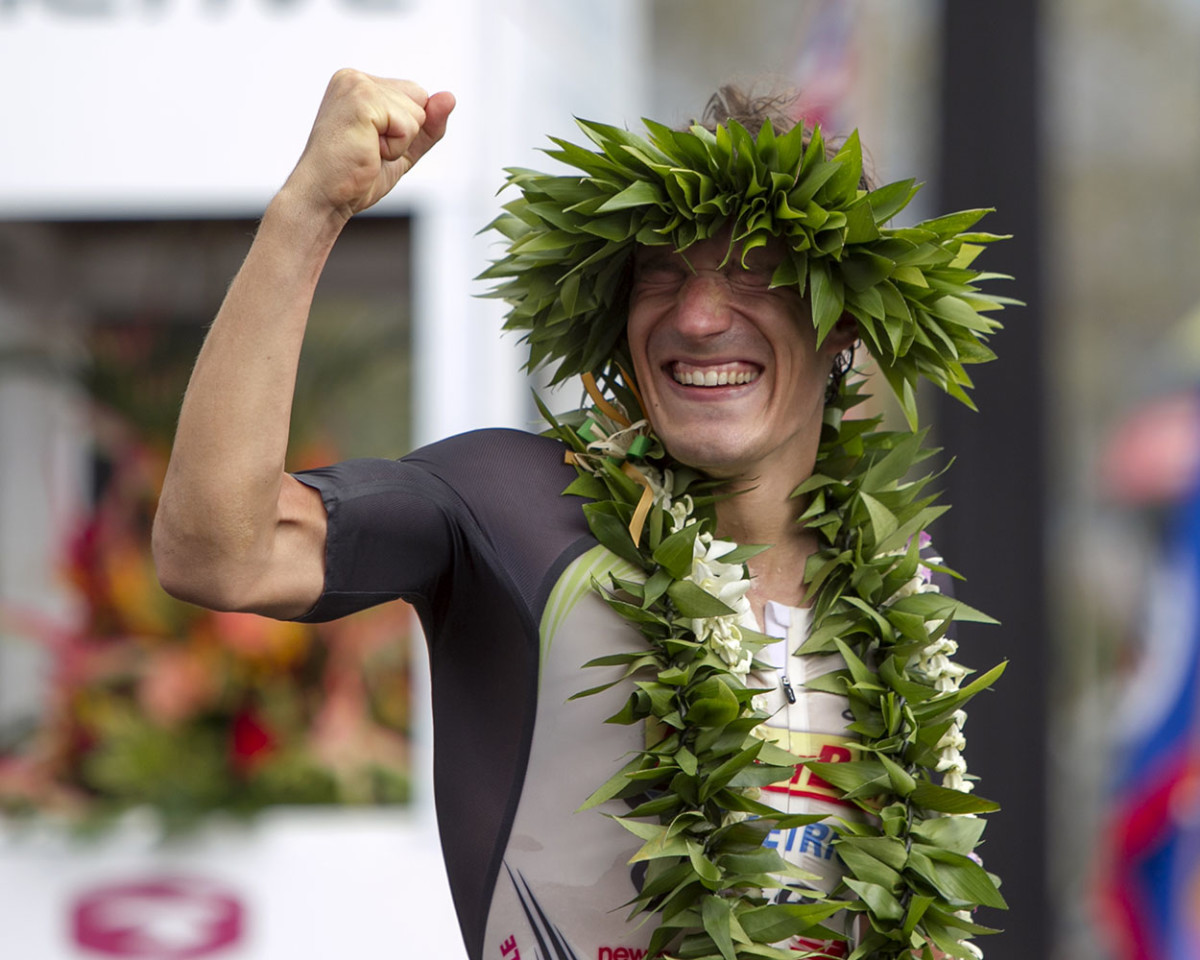
Sebastian Kienle reacts after winning the men's 2014 IRONMAN World Championship.
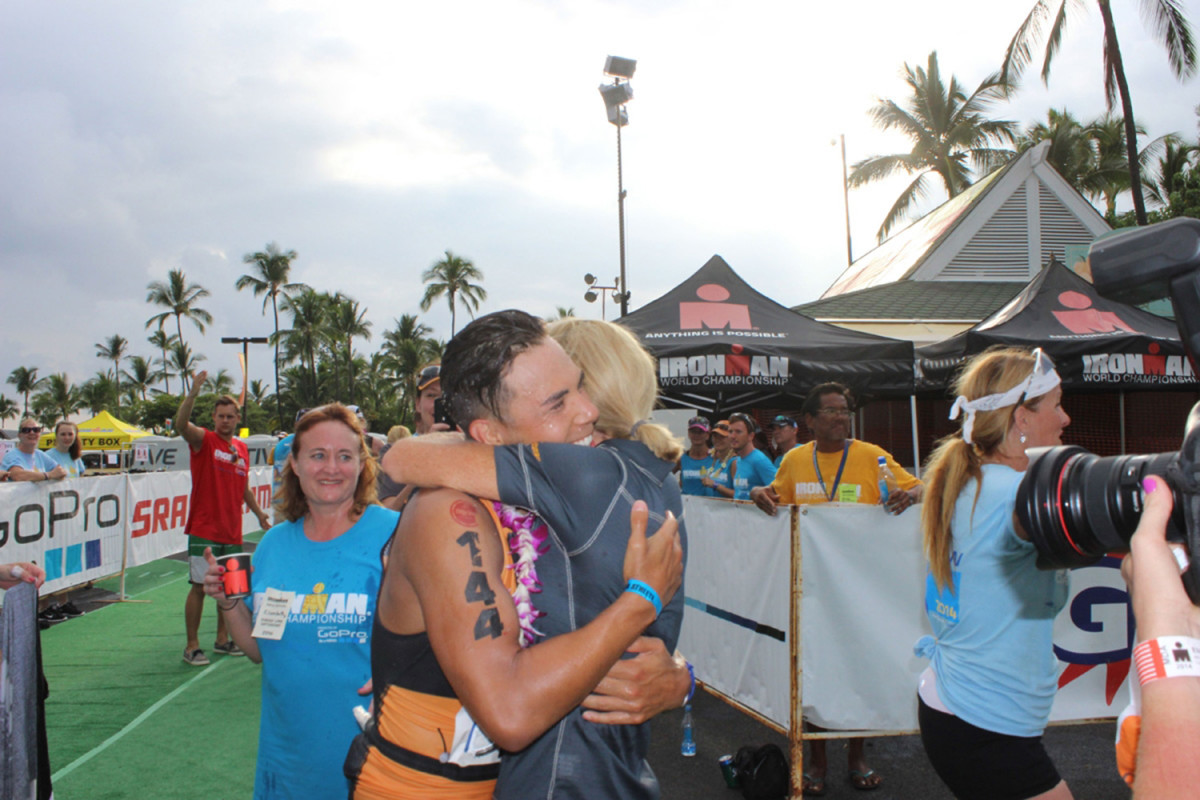
Apolo Ohno hugs coach Paula Newby Fraser after finishing the Ironman World Championship triathlon Saturday, Oct. 11 in Kailua-Kona, Hawaii.
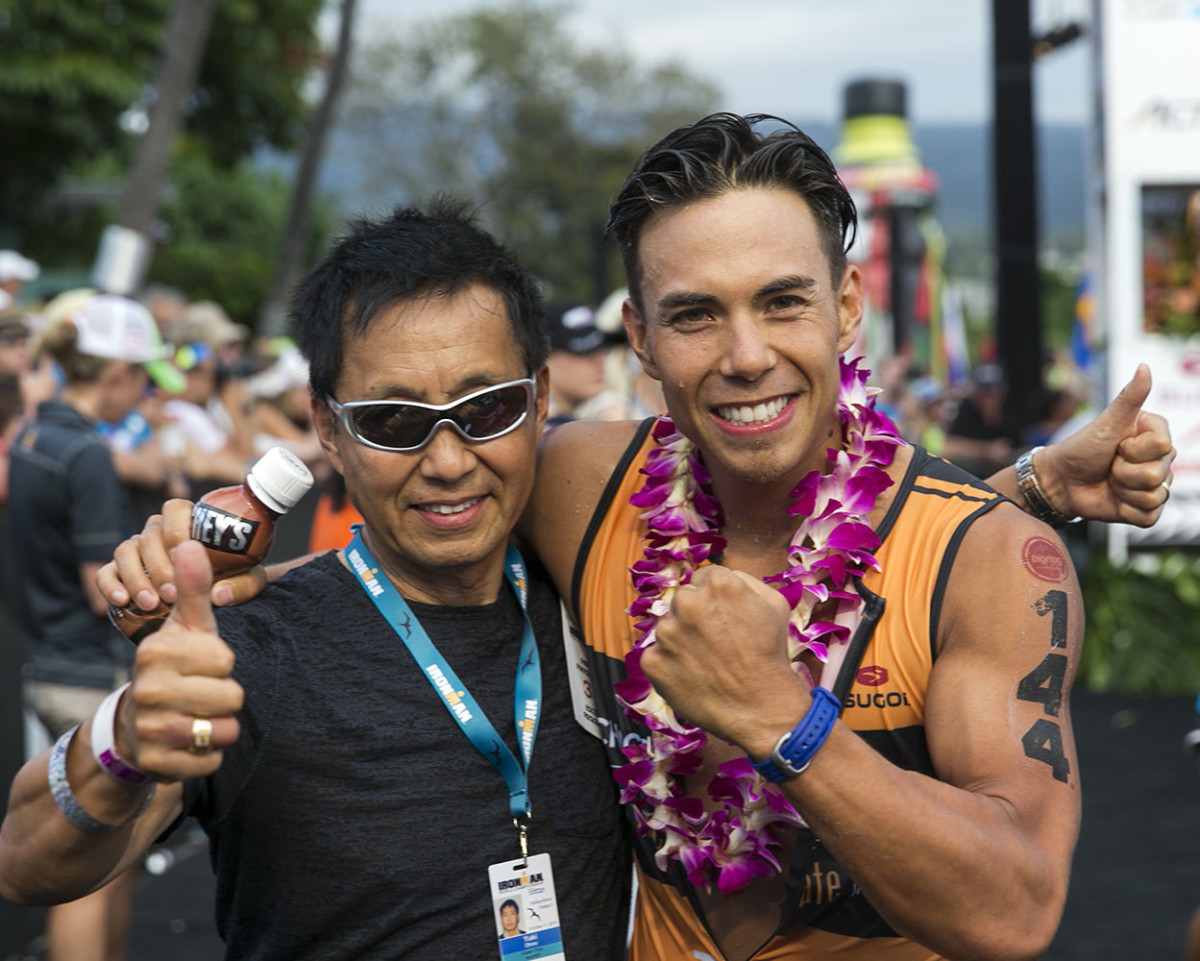
Former Olympian Apollo Ohno, right, poses with his father, Yuki Ohno after Apollo finished the 2014 IRONMAN World Championship.
